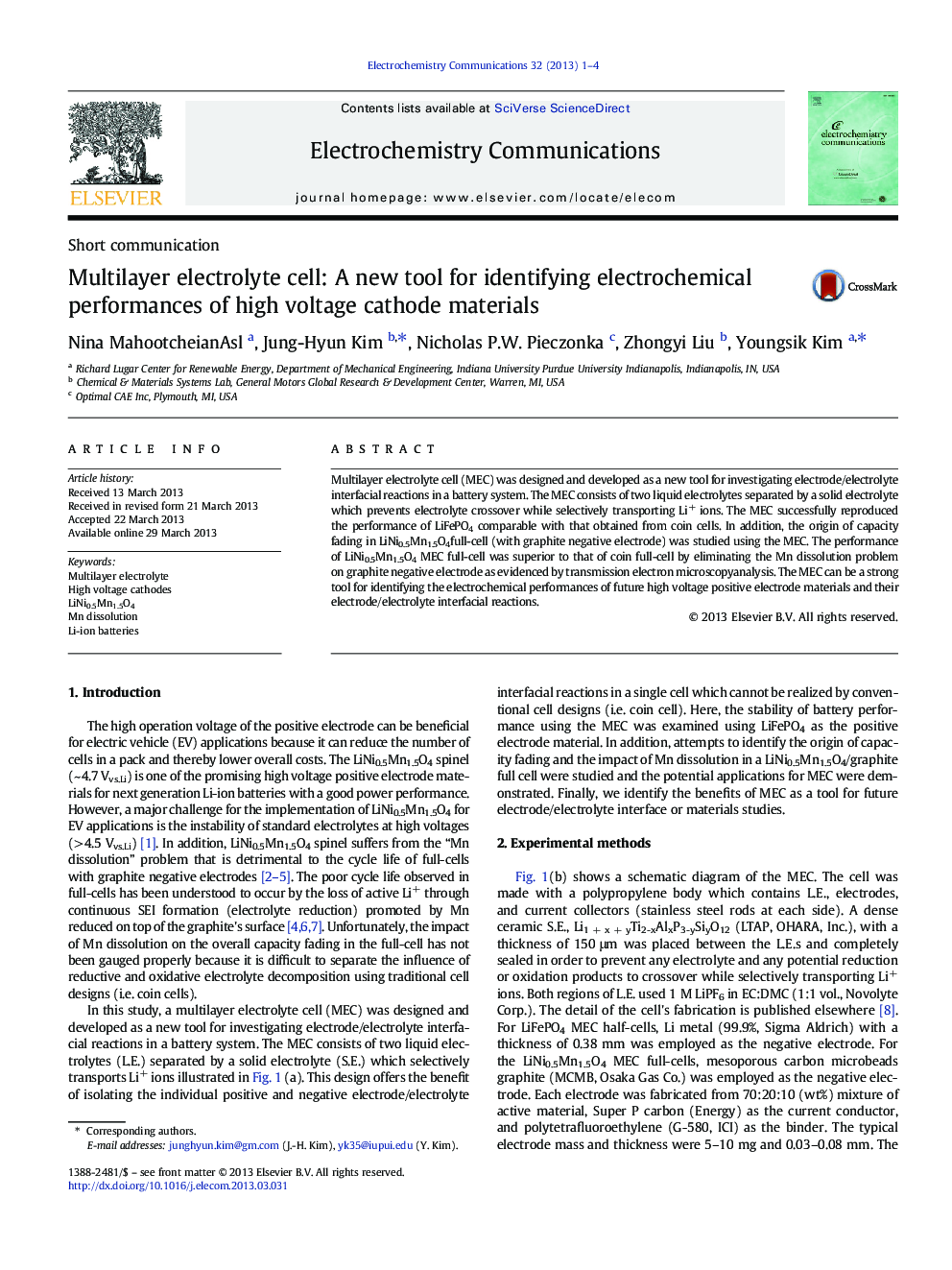| Article ID | Journal | Published Year | Pages | File Type |
|---|---|---|---|---|
| 179421 | Electrochemistry Communications | 2013 | 4 Pages |
•Multilayer electrolyte cell (MEC) was designed & developed as a new research tool•The MEC successfully reproduced the performance of LiFePO4•Origin of capacity fading in LiNi0.5Mn1.5O4 full-cell was studied using the MEC•The result clearly indicates that Mn dissolution is the main degradation factor•Future high voltage electrode & electrolyte can be investigated using the MEC
Multilayer electrolyte cell (MEC) was designed and developed as a new tool for investigating electrode/electrolyte interfacial reactions in a battery system. The MEC consists of two liquid electrolytes separated by a solid electrolyte which prevents electrolyte crossover while selectively transporting Li+ ions. The MEC successfully reproduced the performance of LiFePO4 comparable with that obtained from coin cells. In addition, the origin of capacity fading in LiNi0.5Mn1.5O4full-cell (with graphite negative electrode) was studied using the MEC. The performance of LiNi0.5Mn1.5O4 MEC full-cell was superior to that of coin full-cell by eliminating the Mn dissolution problem on graphite negative electrode as evidenced by transmission electron microscopyanalysis. The MEC can be a strong tool for identifying the electrochemical performances of future high voltage positive electrode materials and their electrode/electrolyte interfacial reactions.
Graphical abstractFigure optionsDownload full-size imageDownload as PowerPoint slide
